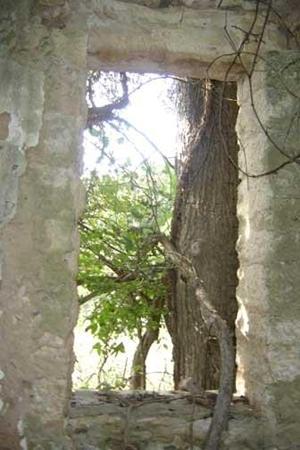| |
THE CLAIMS OF THE WILDERNESSby
Robert G. Cowser |  |
A
few years ago I read an essay by Michael Gallagher based on several short plays
by Horton Foote, a native of Wharton.
Gallagher refers to a remark made by an African-American in one of the plays.
When viewing the site of an abandoned town, Ben, the African-American, says "Th'
wilderness will take it all back." Scott Russell Sanders has also written about
the return of the wilderness to certain areas in southern Indiana where he lives.
He mentions the clumps of sumacs and other trees growing on land that until recently
was cultivated for decades. The conventional wisdom is that if left alone, the
land will return to its original state. Not so, says Matt White of Mt.
Vernon, who writes about the prairie lands of North
Texas and knows about the wildlife that once flourished in this area. The
original ecology cannot be restored. But for the layman, the conventional wisdom
holds.
A few years ago I drove from my home in Tennessee to visit the
farm near Saltillo where I
spent the first eighteen years of my life. As I looked at the site in the corner
of the farm where our house, the hen house, garage, smokehouse, and barns once
stood, I began to appreciate the aptness of the remark from Horton Foote's play.
The house in which I was born was moved a mile to the west in 1950 so that my
parents would have access to a paved road. Several tall locust trees now stand
on the original house site. Elm and hackberry trees stand on either side of the
dirt road that runs past the farm. Their branches form a canopy over the roadway.
Not one of the buildings that once was there is standing. Except for the wire
fence, the place that I remember as a working farm looks like a wilderness area.
As I stood on the site, I realized that the land that day may have looked
much the same when the Caddo Indians built their village several hundred yards
to the west. In the 1840s they were still growing corn, beans, and several kinds
of squash before the white settlers chased them into Indian Territory. My father
planted cotton in a field where one of the
villages once stood. When we were quite young, my brother and I used to find arrowheads
in the furrows as we walked barefoot behind our fatherís plow.
In the
1890s Frank Dillon, an emigrant from Indiana, planted cotton
and peach trees on the site where
the Caddo village once stood. Thirty years later my father bought the farm from
Dillon's widow. He planted cotton and corn,
the kernels of which were white, purple, and yellow. He called it Indian corn.
In their flight from the area I wonder whether the Caddoes left corn
that white settlers used as seed corn.
Soon after he arrived from Indiana,
Frank Dillon built a house, a blacksmith shop, a store, and a kiln on the farm
that my father later bought. A grassy mound swells from the ground where the kiln
once stood. With his neighbor, O. P. Wardrup, as a partner, Dillon operated a
cotton gin.
For five or six years at the beginning of the twentieth century
Dillon operated a post office out of his store. A courier in a horse-drawn buggy
brought the mail from the Saltillo
depot five miles to the north. As one might expect, the post office was named
Dillon. As automobiles became more and more common, Frank Dillon talked of converting
his blacksmith shop to arepair shop for automobiles. He sent one of his sons to
a school in Dallas for training in auto
mechanics.
Primarily because neither the St. Louis Southwestern nor the
Louisiana and Arkansas railroads came near the site of the store and shop, Dillon's
efforts to build a town failed. That morning, as I looked at the peaceful site,
I felt strangely pleased that the town never developed. Even if he had been able
to convince a builder to put up a row of buildings, the town probably would not
have survived the Great Depression. Since no town ever existed there, on return
visits to the place of my birth I do not have to look upon a row of dilapidated
brick buildings or piles of rubble. Locust trees and Bermuda grass now grow over
the site where the house and store once stood. |
 |
Nature
reclaims Lime City
Photo
courtesy M.M. Harris |
Though
the morning was calm, there was a slight breeze from the south that rustled the
leaves in the hackberry trees on the roadside. Having just taken a long drive
through Arkansas on Interstates 30 and 40, I was pleased that there were no sounds
of tires on pavement or of transport trucks displacing the air hardly more than
a foot from where I sat behind the wheel of my car. For all practical purposes,
Horton Foote's character was accurate: the wilderness truly had taken "it all
back." Reluctantly, I slowly got back into my car and started driving the dirt
road back to the entrance ramp to Interstate # 30.
©
Robert
Cowser May
9, 2008 Guest Column
"They
shoe horses, don't they?"
Related Topics: Texas
Ghost Towns | Texas Towns | Texas
Historic Trees | Texas | Online
Magazine | Features | Columns
| | |
|